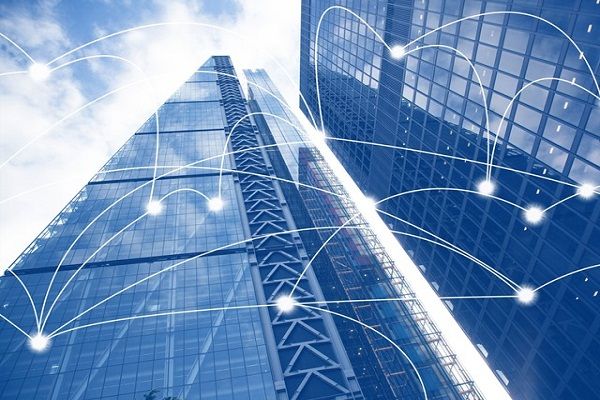Tools that evaluate a building’s intelligence can provide planners, developers, engineers and IT managers with key insights into what they should take into account during design and construction.
But what exactly makes a smart building smart? At its core, ‘smart’ refers to technology that can automate functions, collect data and analyse it, all in the name of running a more efficient building. It comes under IoT – or Internet of Things – and is generally connected to other devices or networks.
According to Statista, the market for smart homes is projected to reach almost £10bn by 2026. This is largely attributed to the customer desire for interconnectivity and their increased awareness around the various benefits of smart tech such as remote monitoring, improved security and supporting sustainability efforts. In fact, sustainability is one of the key drivers for the increased adoption of smart buildings and cities.
The Telecommunications Industry Association and UL recently launched SPIRE, an online self-assessment and rating programme that evaluates building intelligence. As a relatively new and ambitious assessment matrix, it is advantageous for stakeholders to fully understand the programme, and how it can benefit their operations and the communities in which they do business.
The Corning Optical Communications headquarters building in Charlotte, North Carolina, actually served as a pilot for SPIRE. The tool evaluates building intelligence and performance across a number of key criteria. It isn’t mandatory, but understanding what these measures are does provide planners, developers, engineers or IT managers with valuable insight into what they should consider when designing or constructing smart buildings. This is becoming increasingly important as the demand for interconnectivity increases, and incorporates five fundamental elements.
Connectivity
Reliable connectivity is a must for any building today. It is now considered the Fourth Utility, as crucial as electricity, water and gas. For a smart building running multiple applications, having the right network in place is essential. Traditional copper networks have their limitations, but fibre-optic networks can deliver the bandwidth needed to support the data demands needed for new technology, like upgraded Wi-Fi or 5G cellular coverage.
In a post-Covid world, technology has become ever more integrated into environments from office spaces and schools to hospitals and airports. Sensors and other tools have been implemented to monitor spaces for overcrowding, check temperatures upon building entry, monitor air quality and more. These emerging digital health tools have been added to smart building networks at a fast pace to help ensure the safety of those inside.
Life and Property Safety
Keeping building occupants safe is a top priority for owners. From fire safety to emergency response, a clear plan is necessary. Smart technology plays an important role in monitoring system performance, detecting problems like a fire and deploying emergency communications when needed.
Power, Energy and Sustainability
Smart buildings’ monitoring technology also serves other purposes, like sustainability. When you think about things like heating, ventilation, air conditioning (HVAC), lighting and the many electronics that occupy a building, it’s easy to understand why energy is one of the biggest expenses—and one that building owners want to minimise. Smart buildings monitor and analyse consumption so that areas where there is wasteful energy spending can be identified and reduced, if not eliminated. The data collected can help identify trends so that demand spikes can be managed or maintenance can be scheduled during low-demand hours. SPIRE recognises many programmes and certifications dedicated to this effort. LEED, Fitwel and the WELL Building Standard are just a few of the programmes.
Cyber Security
Another area where building intelligence is vital is in detecting cyber threats. As smart cities are built and new internet-connected technologies are adopted, the possibility of a cyber attack increases drastically. Cyber attacks can be crippling to governments, businesses and consumers, including their physical building infrastructure. Being able to identify threats and effectively respond is mandatory given today’s threat landscape and this can be integrated into the infrastructure of smart buildings as part of SPIRE measurements.
With a strong network as the foundation, UK smart buildings can continue to be equipped for the needs of tomorrow; enabling all organisations to operate efficiently and sustainably without missing a beat.
Source: E&T










